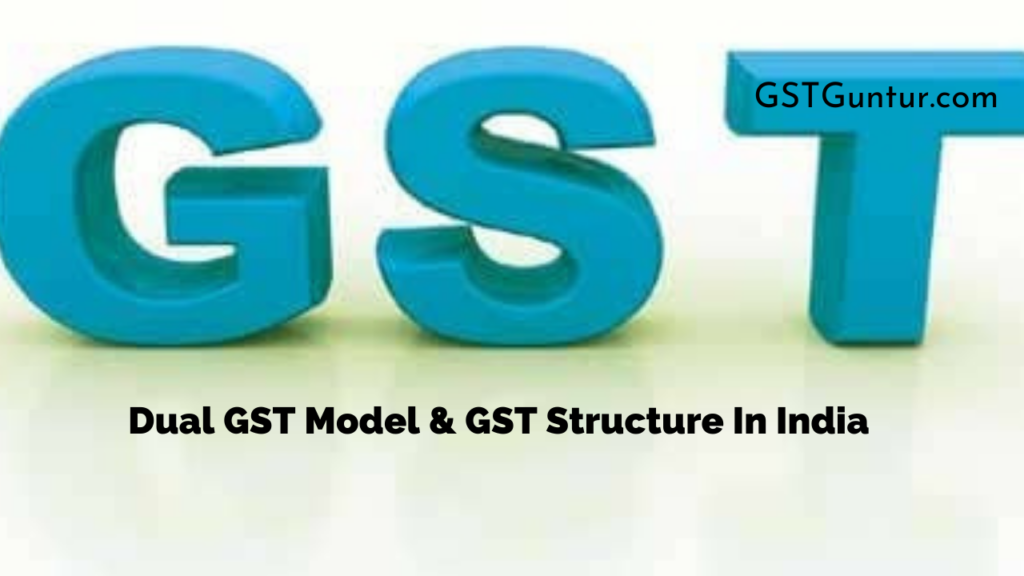Dual GST Model & GST Structure In India: Many countries worldwide have a single centralised GST system, i.e. a single tax applicable throughout the country. However, in most federal countries like Brazil and Canada, a dual GST system is widespread, whereby GST is levied by both the federal and State or Provincial governments. India is a federal country; therefore, it has a division of power between the federal and state governments. Dual GST is supported in countries where there is a federal structure of the Government. As in this system, states would be free in their revenue sources, and they don’t have to rely on the Centre to share the revenues they receive. This is essential as it will lessen the conflict between the Centre and State over revenue distribution.
- Dual GST Definition
- Dual GST Model Benefits
- GST Structure In India
- FAQ’s on Dual GST Model & GST Structure In India
Dual GST Definition
The dual GST means that GST, that is levied concurrently by Center and State Governments. Therefore, every supply transaction of goods or services shall undergo Central GST (CGST) and State GST (SGST) when the transaction is inside the State. However, when the transaction is between states, Integrated GST (CGST + SGST) will be raised by the Central Government. Dual GST is supported in countries where there is a federal structure of the Government.
As in this system, states would be free in their revenue sources, and they don’t have to rely on the Centre to share the revenues they receive. This is essential as it will lessen the conflict between the Centre and State over revenue distribution. The GST regime supersedes the confusing taxes with a single federal tax rate. This is created to unify India’s tax system, make it more comfortable to do business, and decrease prices for customers. Dual GST is normally of two types: Non-Concurrent Dual GST Model and Concurrent Dual GST Model.
Dual GST Model Benefits
The Dual GST is an easy and clear tax with one or two CGST and SGST rates. The dual GST is already confirmed and presents the results in:-
- decrease in the tax numbers at the Central and State level
- reduction of the efficient tax rate for many goods
- replacement of the current cascading impact of taxes
- the decline of the taxpayer’s transaction costs through interpreted tax compliance
GST Structure In India
GST was preceded with the purpose of reducing the tax burden and inflation rates. GST is an amalgamation of various taxes. It is a comprehensive, uniform, multi-stage, destination-based tax system applied to enhance value addition. However, the current tax regime has made some tax relief; but a notable increase in compliance cost is a fact that is indisputable. The GST tax structure comprises four structures.
- Central Goods and Services Tax (CGST): CGST is a tax levied on Intra State supplies of both goods and services by the Central Government and is administered by the CGST Act. SGST will also be levied on the same Intra State supply but will be administered by the State Government. This means that both the Central and the State governments will agree to consolidate their levies with a proper proportion for revenue sharing. However, it is clearly stated in Sec 8 of the GST Act that the taxes be levied on all Intra-State supplies of goods or services, but the tax rate shall not surpass 14 percent.
- State Goods and Services Tax (SGST): The SGST is a tax levied on Intra State supplies of both services and goods by the State Government and will be administered by the SGST Act. As described above, CGST will also be levied on the very Intra State supply but will be directed by the Central Government.
- Union Territory Goods and Services Tax (UTGST): the UTGST is similar to SGST. The only variation is that the tax revenue goes to the treasury for the particular administration of union territory where the goods or services have permanently been employed. The Union Territory directly comes under the direction of the Central Government and does not have its own elected Government as in the case of States. UGST is also credited at the same rates as CGST.
- IGST (Integrated Goods & Service Tax): Under GST, IGST is a tax levied on all Inter-State supplies of services and goods and is governed by the IGST Act. IGST will be applicable on any supply of goods or services in both cases of import into India and export from India.
FAQ’s on Dual GST Model & GST Structure In India
Question 1.
What is State Goods and Service Tax?
Answer:
SGST is one of the components of GST levied and raised by the respective state government on intra-state supplies. Such a tax is administered by the State Goods and Services Tax Act, 2017. The SGST is one of the three categories under the Goods and Service Tax with one tax concept on one nation.
Question 2.
What does GST in India mean?
Answer:
The Goods and Services Tax (GST) in India is regarded as one of the greatest reformations in indirect taxation. It has been decreed effective pan India from 01st July 2017 and is based on the law of destination-based consumption tax.
Question 3.
When is IGST applicable?
Answer:
IGST is applicable in the state of inter-state supply where the place of the supplier and location of supply are in two different states or in two separate union territories.
